Doi Inthanon National Park – A Day Trip to Mountains of Northern Thailand
Doi Inthanon National Park and its pristine jungles are protected by the vegetative mountains, earned accolades rightly for being the highest mountain in Thailand, in Chiang Mai Province of Thailand. The national park surrenders to the magnificent façade of nature adorned with hidden waterfalls, virgin forest covers, hill top fringe villages, spectacular organic farms, remote trails, hot water springs and acres of land covered in aromatic coffee plantations.
Planning a trip to Thailand – Read the complete two weeks Itinerary.
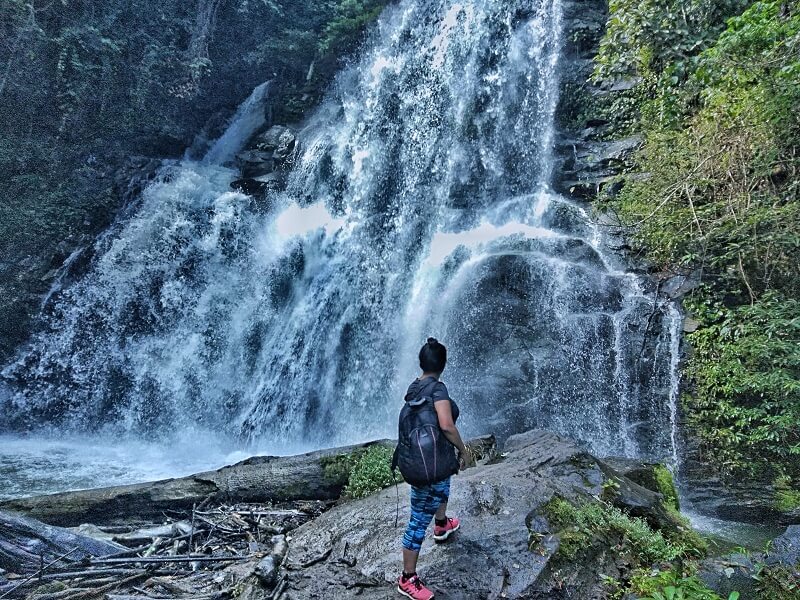
Table of Contents
About Doi Inthanon National Park
Numerous treks and trails are tucked within the clandestine arms of the jungle overlooked by the mountain ranges. Called – “The Roof of Thailand”, the national park boast of mountain range elevating from 800 to 2,565 meters above sea level. It is a quintessential gateway to remote tribe villages perched atop mountains, impregnated with canopy of wilderness and royal temples, defining the magnificence of medieval architecture.
PIN TO READ LATER
There are illusive corners within the national park hidden from the mainstream travel fanatics but exploring those compels you to step into a realm, extensive and for long. The mountains extend their arms south from Daen Lao Range and cuts through the Salween and Mekong watershed. The Doi Inthanon National Park got its conserved reputation in 1972 where an area of nearly 483 km2 was protected from clasp of civilization, prohibiting nature inflaming activities.
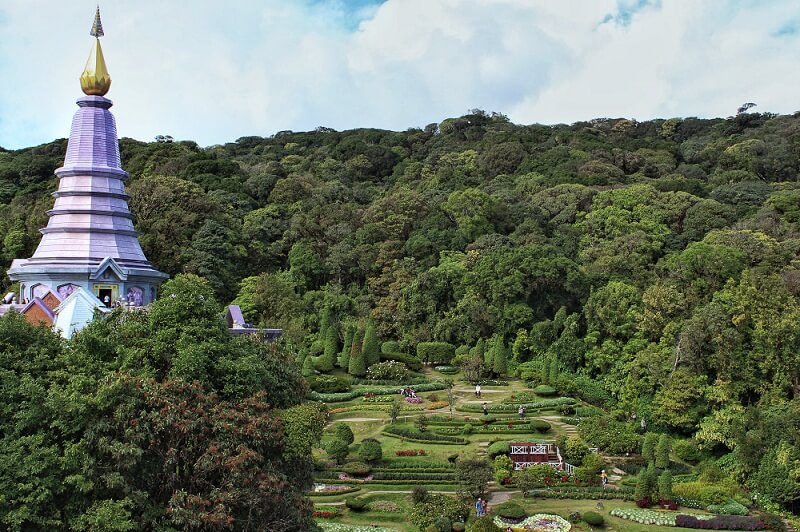
Conservation and Doi Inthanon Royal Project
The unchecked human invasion of digging into natural resources, unabashed marching towards deforestation and cry of poverty led to the foundation of The Royal Project Doi Inthanon. The project established in 1979 is an attempt to cross over the insurmountable boundaries and design an alternative livelihood for the people of hill tribes. With its inception in Khun Klang Village, Hmong tribes were the first to join the movement of micro entrepreneurship.
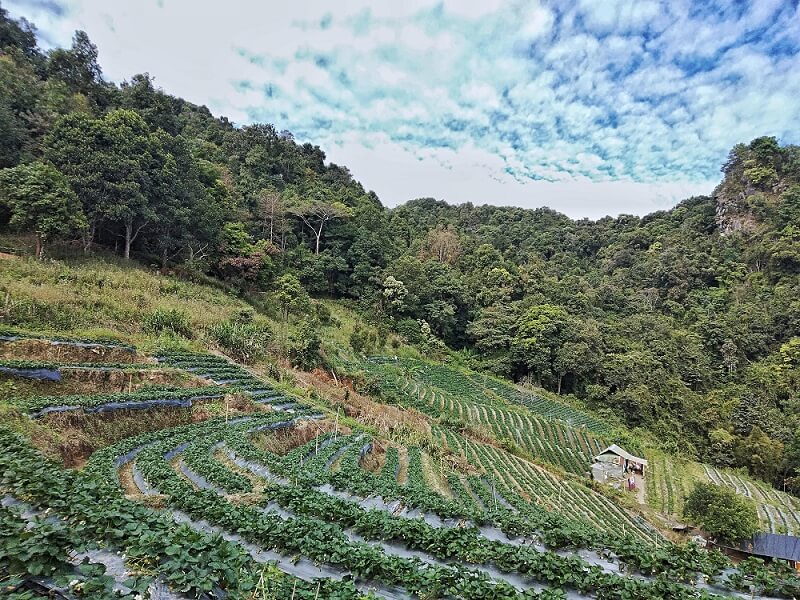
The project spread like wild fire through lower foothills with its infectious noble motive, changing the opium farms into acres of strawberry and coffee plantations. The alluvial hill soil today stands decorated with gorgeous rice terraces, strawberry orchards and aroma of freshly brewed coffee. The fight against the rampage sucking of eco-system paved an outlet for protectors to walk in, conserving the forests and adorning it with national park status.
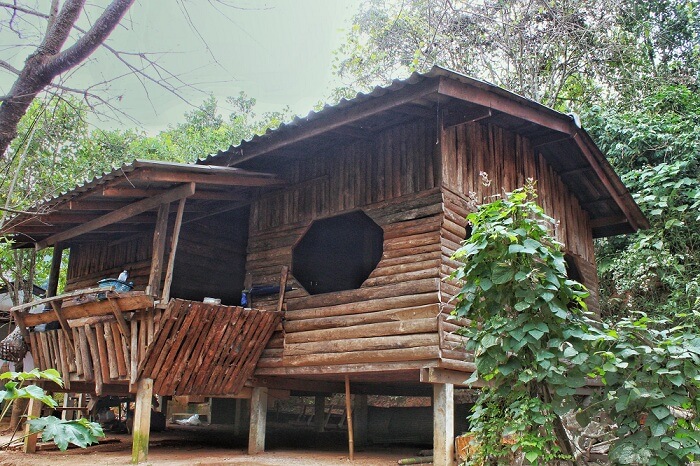
Tribes and Villages of Northern Thailand
The hill tribes who found their home in lower mountains are mostly refugees from Myanmar; escaped the brutality of war and walked miles away crossing the adjoining borders. The hill tribes constitute minority ethnic groups migrated from Laos, China and Myanmar into Northern Thailand.
This reminds of the novel – “One Hundred Years of Solitude” – magnum opus by legendary Gabriel Garcia Marquez (Read, if you haven’t), the story of starting a village that remained in solitude for 100 years until its collapse. In this case, the tribes only expanded their reach but settled on mountains from scratch, still a little isolated from mainstream Thailand.

The organized tours can never delve deeper into the lifestyle and culture per se of the tribes, most limited to market places. The Karen long neck tourist village and market has often been detest by people, for it doesn’t quality lesser than walking through human zoo.
Beyond these, in the remote uphill, transcending acres of strawberry farms lay the truth, ignited through preserved wisdom of these refugee tribes. The change from opium cultivation to sustainable stash and burn agriculture marks an achievement. Here are the dominant tribes living in harmony, in the mountains of Doi Inthanon
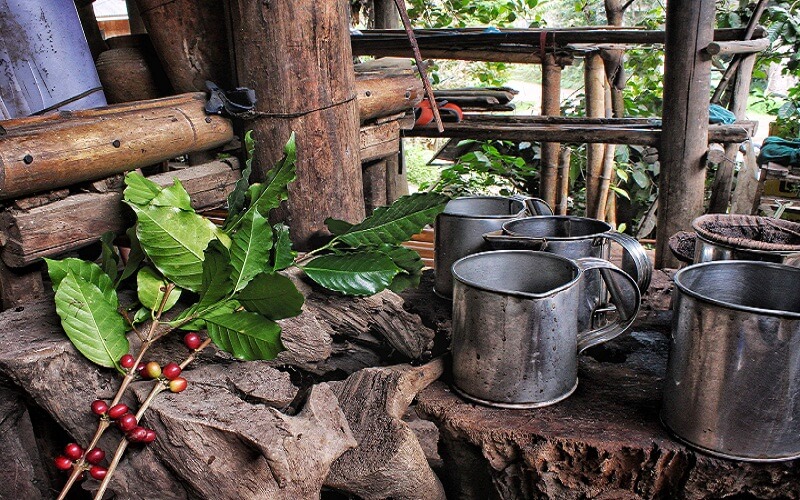
Karen Tribe
The golden ring elongates the delicate neck of the women, eccentric to the tribe and enough to leave the onlooker agape. They have the maximum population distributed in the highlands of Burma, Laos and Thailand, marked as refugees from Burma. The dry sandalwood paste on their cheek in accentuated with their poignant smile.
Hmong Tribe
The ethnic group majorly are spread across Northern Thailand, Southern China, Vietnam and Laos. The women, mostly petite, gracefully wrap intricately embroidered dainty skirts, splashed in mosaic of colors and ethnic design. The bohemian silver jewelry compliments their colorful eccentric style of clothing.
Lahu Tribe
They are majorly hill tribe of Yunnan district in China but are known to have originally migrated from Tibet. The constant Chinese domination led to some of the population to migrate to the hills of Northern Thailand in 1870s to 1880s. The distinctive cloak in black with white diagonal stripes mark identity of Lahu Women, although not everyone wears the traditional jacket or cloak.
Akha Tribe
The indigenous hill tribe mostly is concentrated in the mountains of Thailand, Myanmar, China and Laos. The tribe migrated to the mountains of Northern Thailand due to political unrest and civil war in Myanmar and Laos. They take pride in keeping alive traditional wisdom of spinning cotton thread, use of indigo to hand dye and adorn their upper body mostly in intricately embroidered black jacket, added with lapel and cuff. The elaborate head jewelry, unique silver chunky pieces and feathers, address their ethnic style.
Mien Tribe
The Mien tribe is a minority ethnic tribe and scattered across the highlands of South East post the Vietnamese War. They are also known as Yao and originally from China who gradually migrated to Vietnam, Laos and Thailand. They are mostly see wearing long embroidered ethnic jacket, loose trousers, a colorful lapel around neck and turban to complete the appearance.
Lisu Tribe
They are ethnic groups inhabiting the mountains of Burma and many refugees have migrated to southwest China, Northern Thailand and North Eastern India in Arunachal Pradesh. They are known to have originally come from Tibet. They mostly live in bamboo houses with their extended families. Most women are seen wearing tunic in either blue or green color accessorized with a black belt and bottomed with trouser. Men are often seen sporting blue jacket with loose trousers.
Lawa Tribe
The Lawa ethnic tribe of Northern Thailand have resemblance with Lua people of Northern Laos and their language chords similarity with Blang and Wa language of China and Myanmar. Their history dates back to 5th to 10th century when they lived in Central Thailand and were part of the present day Lopburi. The city later became part of the Ayutthaya Kingdom in 1388. The orange and yellow beaded necklace is a jewelry worn by unmarried woman. They wear tight skirts designed in parallel lines in a mix of blue, yellow, pink and black topped with ethnic blouses.
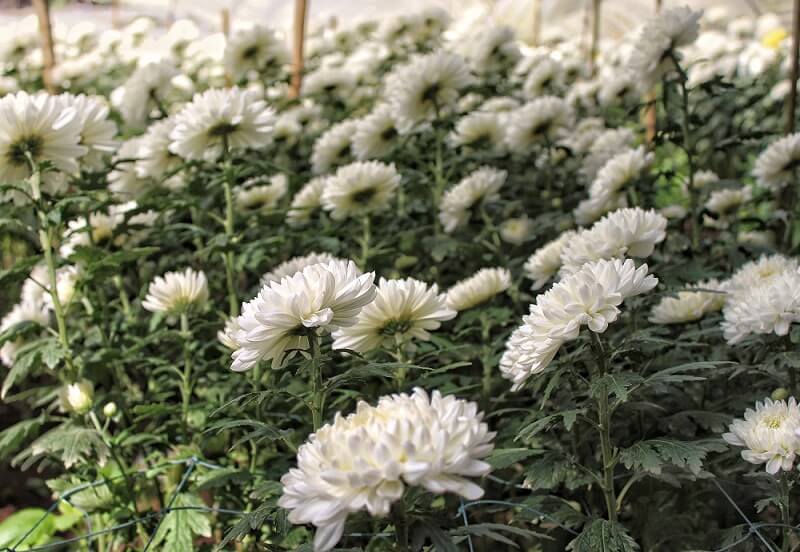
Is it Worth Taking a Day Trip to Doi Inthanon National Park?
Depending on how much time you have, a day trip can be included or self exploration can be opted for. With limited time, it is better to take a day trip to experience a little of Doi Inthanon that includes walk through strawberry farms, flower cultivation, coffee plantations, hidden waterfalls, a little insight of the villages and visit to the Queen and King Pagodas.
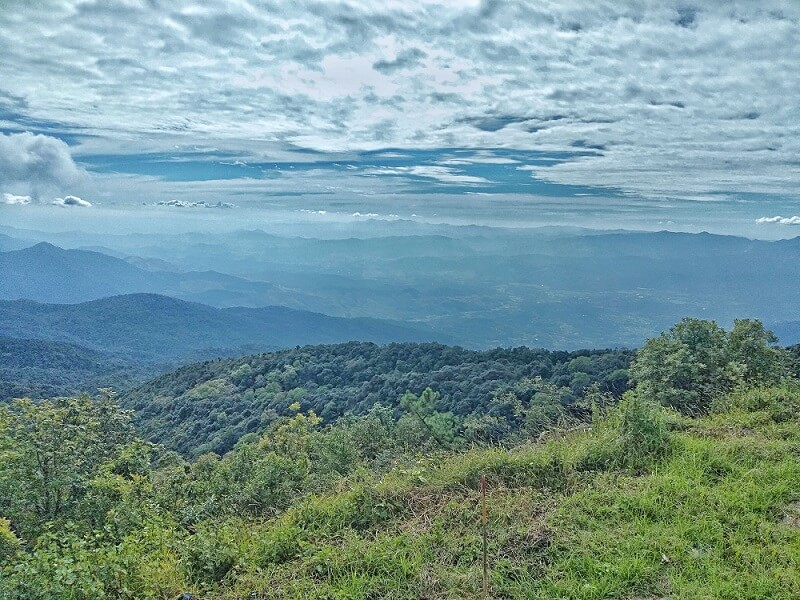
I chose to take a day trip with Travel Hub Chiang Mai owing to my limited time, desire to trek through the surreal trails and for comfort of traveling without much hassle. If you don’t know how to ride a scooter or bike, have less time and looking for a budget trip, a group tour is perfect choice. However, you can also opt to hire a bike and explore the villages with a guide for more in-depth understanding.
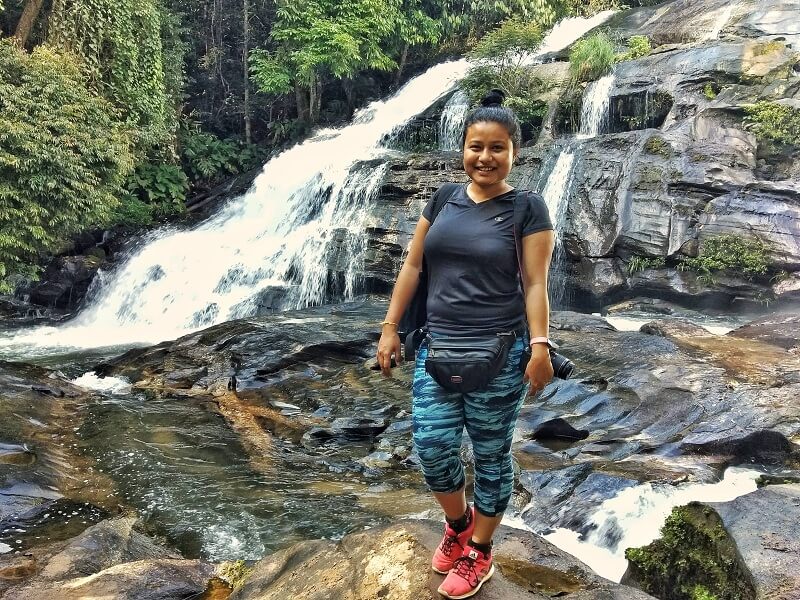
Day Trip with Travel Hub Chiang Mai
I am completely satisfied with my day trip to Doi Inthanon National Park with the company; it was comfortable and well organized. I opted for a group tour to Doi Inthanon National Park along with Pa Dok Siew Nature Hike, whisking into offbeat nature trails, away from the touristic routes. The day started with a mini air conditioner bus picking up everyone who signed up for the tour from their place of accommodation. The full day tour covered gorgeous waterfalls, nature trails and temples, overlooking the stunning valley shadowed by the mountains.
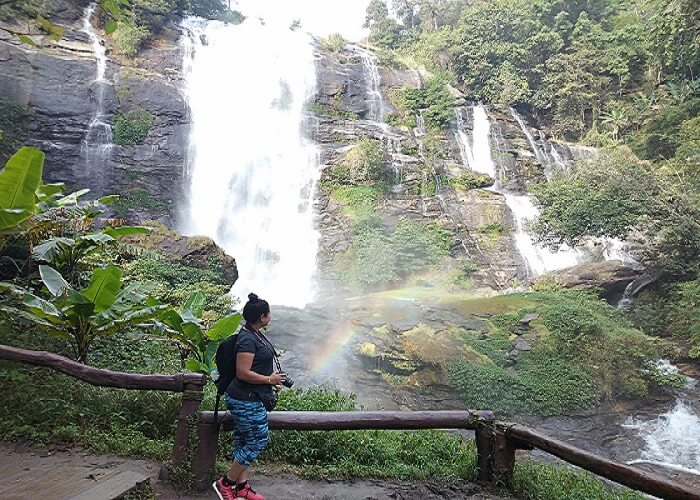
Vachiritharn Waterfalls
The spectacular waterfalls creates a rainbow as the milky water thunders and fall on the rock, rays of sun creating a refraction, throwing spectrum of colors. The stairways lead down close to the waterfall, perfect for those envious pictures. The surrounding jungle cut through gurgling stream of water and rocks adds to the nonchalance.
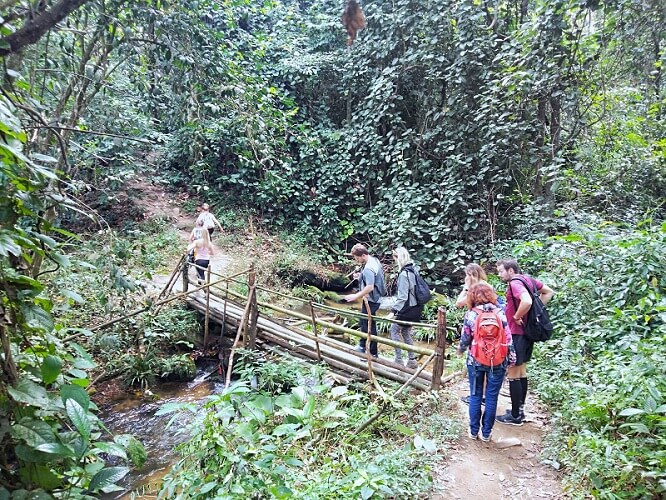
Pah Dok Siew Nature Trail
The nature trail is dotted with virgin forest running along rocky terrains fed with streams and quaint waterfalls. The excellence of eco-friendly architecture in form of wooden bridges and traditional tribe homes perched on stilts are perks of the trail. Did someone say strawberry? How about some freshly brewed Somsak coffee? Yes, all of these are little treasures to pick and indulge in while hiking and walking through the trail, into the Karen village.
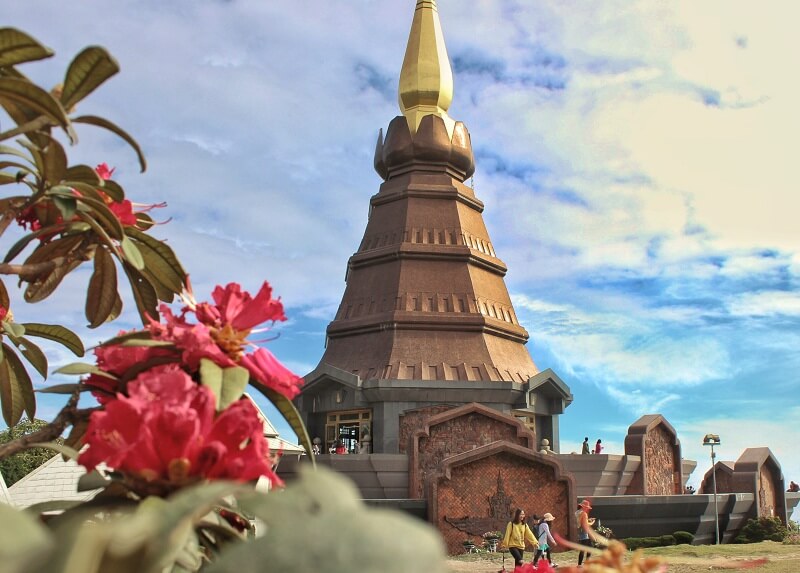
King and Queen Pagoda
The Royal Twin Chedis – Queen and King Pagodas, stand on the main road before reaching the summit of the mountain. The royal chedis were built to commemorate the 60th birth anniversary of the late King and Queen. The King Pagoda known as Naphamethinidon was built in 1987 to honor King Bhumibol Adulyadej and the Queen Pagoda was built in 1992 to honor Queen Sirikit. The wall murals carved on the brown bricks speak of mythological stories intertwined with stark realities and progressive civilizations. The garden dotted with flowers open a kaleidoscopic world, filled with artisans of nature. The vast expanse of surrounding mountains echo through the valleys, a sight that satiates the nature love ingrained in us.
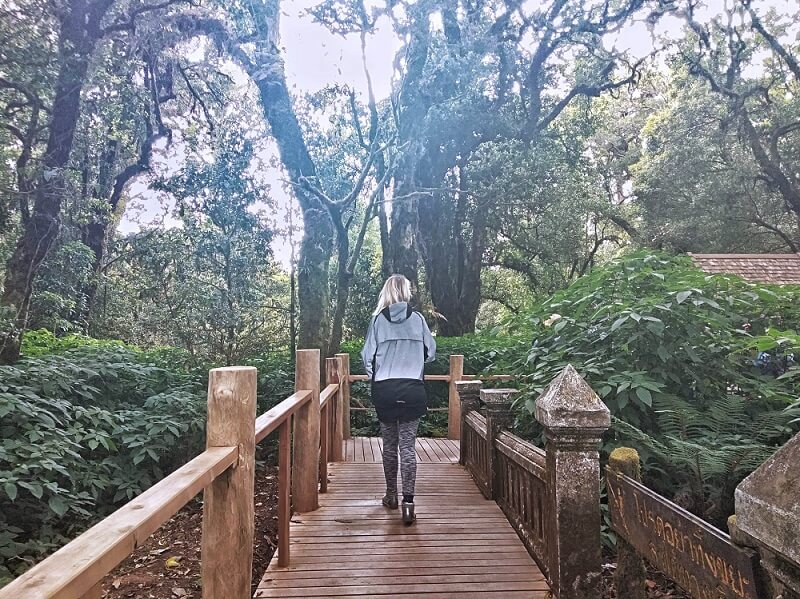
Angkha Nature Trail
It is a short trail raised on a wooden platform, walks through the eerie looking jungle, into a garden with a small temple and medicinal plants. With a guide, you get a better understanding of different medicinal and aromatic plants and trees, serving larger purpose in life.
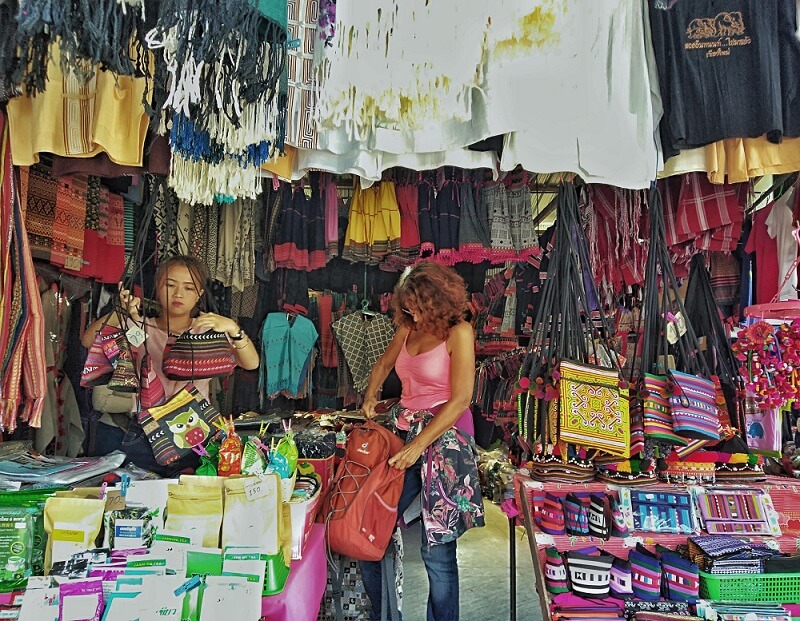
Hmong Hill Tribe Market
The hill tribe market is a hotbed for the ethnic Hmong tribes from the remote village to sell their produce – fruits, handicrafts, souvenirs, clothes and so many accessories. The freshly chopped strawberries are definitely a good buy. It is always good to contribute to the community, help them grow by buying something, worth the memories.
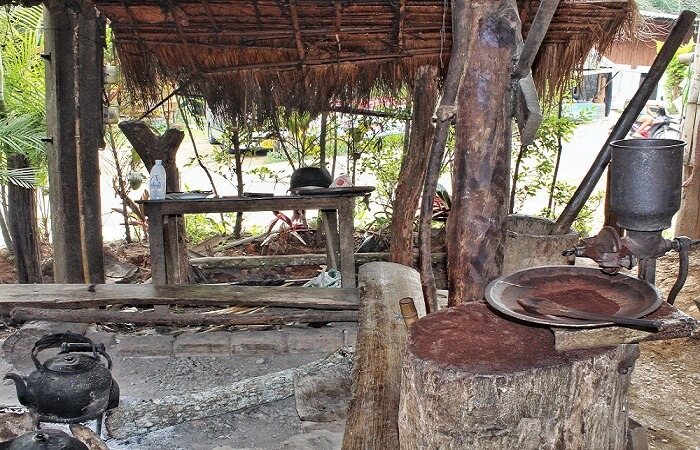
Where can you book the tour?
This day trip is absolutely worth it if you are looking for comfort, convenience and short on time. It is a well organized trip where guests are picked up from their accommodation in an air conditioner van, guide speaks good English for everybody to understand and includes entrance fee for all places along with mouth watering traditional Thai lunch. You can book the trip with Travel Hub Chiang Mai here.
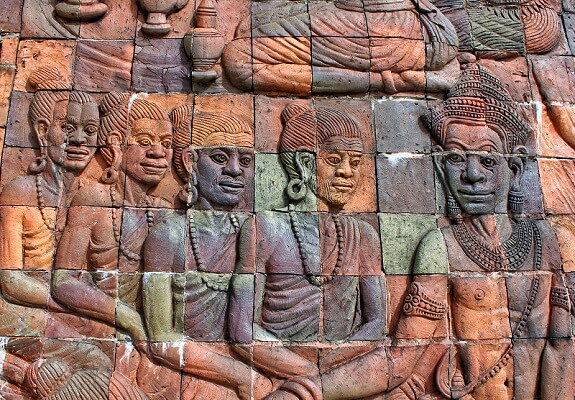
One day is no where enough to even begin scratching what lies deeper in the villages, in the corners of the national park and within the hill tribes. Leaving behind the touristic trails into the subtle mundane lives of the tribes gives a larger insight about the hill tribes and their surrounding resources. Blame it on the time, yes please! A day trip will suffice a little to get to know something about the place and its surroundings.
If you loved the blog, pin the post and read later
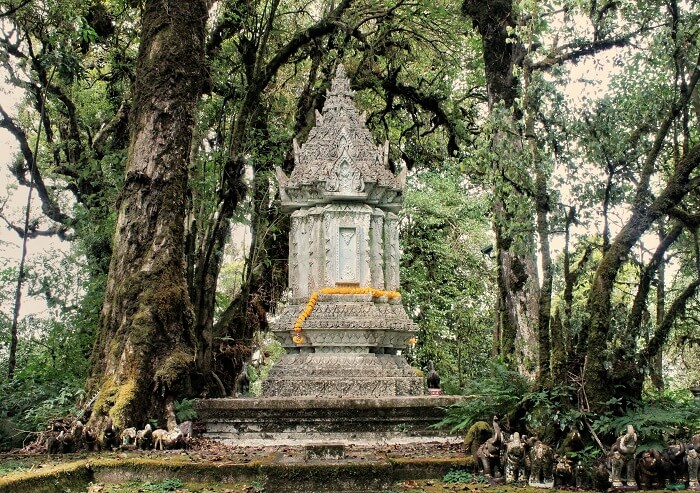
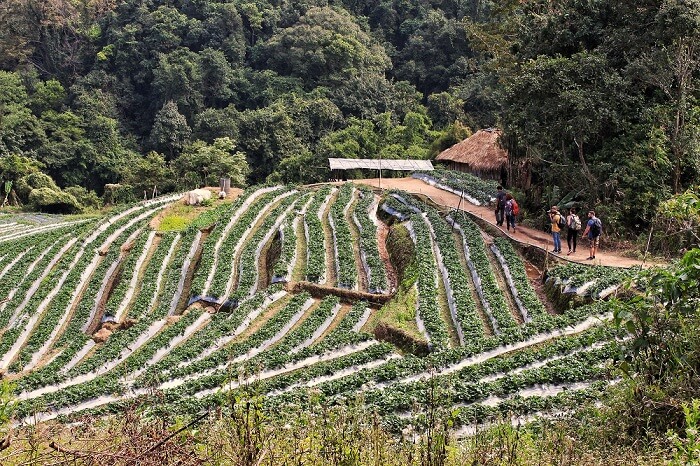
Disclaimer – My day trip to Doi Inthanon National Park was sponsored by Travel Hub Chiang Mai but views are mine. I would definitely recommend them for a day trip.


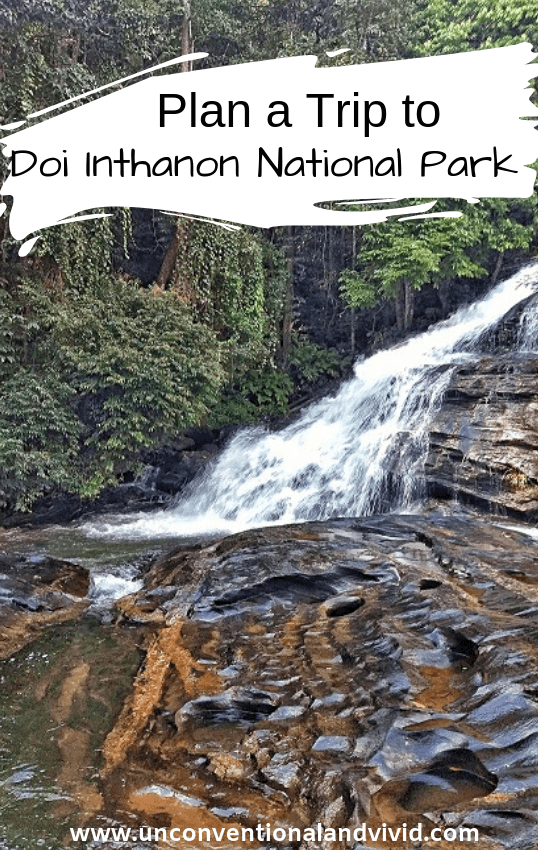
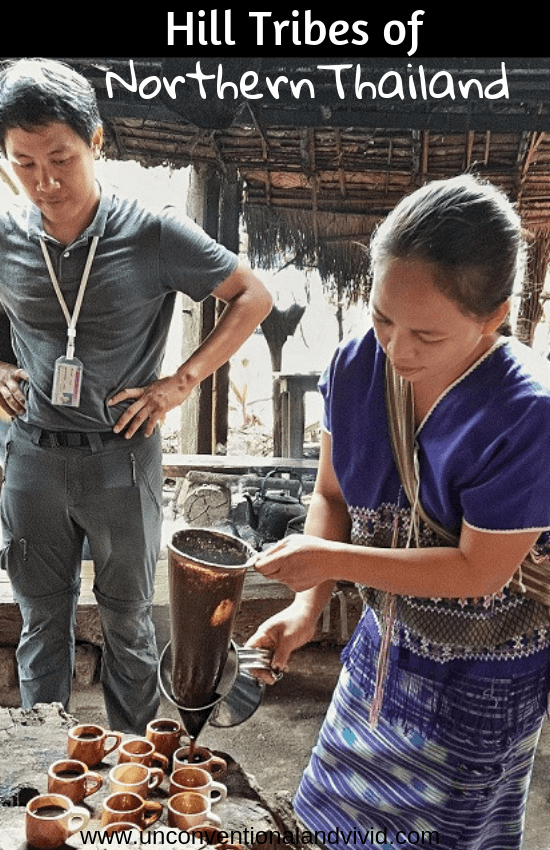

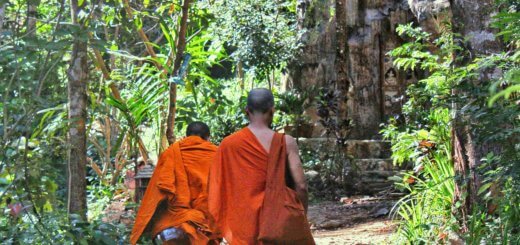
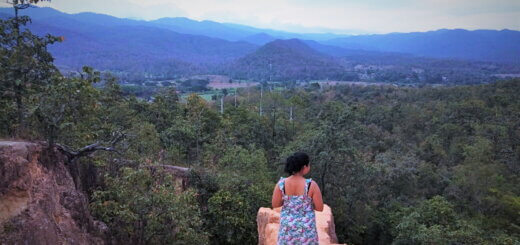
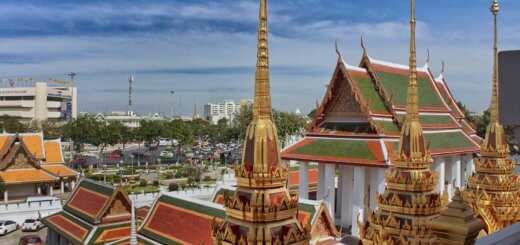

This looks amazing! I have only been to the mountains in Thailand once a few years ago but will return this summer and want to do some new things – will definitely save this post for when I go.
Such a fantastic post! And this freshly brewed Somsak coffee looks so inviting ! Even if I want to visit Burma I didnt know about this particular place, thanks for sharing 🙂
Oh my this is so beautiful! It’s right up my alley and I’m definitely gonna add this to my list of places to go!
Thank you for bringing Doi Inthanon to our attention. Thailand blog posts generally tend to cover the coastal areas so great to see a look at the inland mountainous area.
I don’t know why I went to Doi Inthanon NP just for a few hours. Not having enough time made me skip all major attractions (which I regret about until this day,) so I guess I should plan another trip to return and explore this place in depth!
I still need to explore northern Thailand but when we do this will be a place I will look into going to!
Such a fantastic post! And this freshly brewed Somsak coffee looks so inviting ! Even if I want to visit Burma and I want to go to Thailand again (I have been to the South only) I didnt know about this particular place, thanks for sharing 🙂